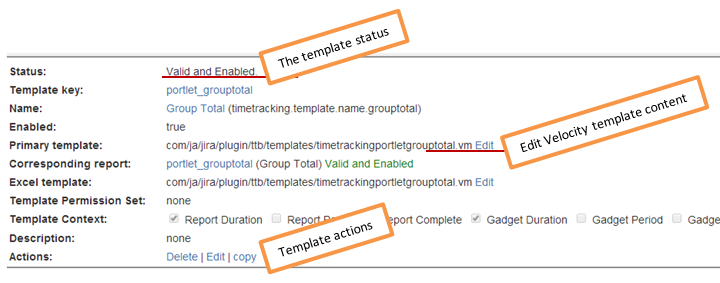Basic Configuration
Some basic configuration for the TTB Add On
Dates
Configure basic basic date options.
First Day of Week
Configure a another First Day of Week than the Java Calendar default.
One will only need to change this if the Java default for your JIRA host is incorrect.
Search Date
In order to optimize issue search the Add On will only include Issues that has been updated after by the end user selected start date.
If you have users that will log work in advance, one can increase the number of days to include in the issue search. Default is 5 days.
Convert to User Time Zone
JIRA stores work log start dates in the JIRA host server time zone.
If you have users working in different ime zones one can consider changing this option to true/yes.
Then all date and time values will be displayed using the end users time zone settings.
Date Patterns
A number of date patterns can be configured.
The date patterns will override any user date format settings.
Relative Durations
You can modify, add or delete options relative date options.
A Relative Duration option is used in the gadget configuration screen. Instead of a fixed date duration the end user will configure a Relative Date.
In a gadget context this makes more sense since a gadget is static over time.
Adding a new Relative Duration is easy.
The Relative Duration string must be on the form integer_integer_unit. Where integer is a number from 0 to 9 and unit is d,w,m or y respectively Day, Week Month or Year. The first integer defines the start date, which is the number of days/weeks/months/years from to day. The second integer defines the end date, which is the number of days/weeks/months/years from start date. E.g. 0_0_m is this month. 0_1_d is this day and tomorrow. 1_1_y is this and last year.
Worklog Filtering
Respect Worklog Visibility
Configure whether or not to respect worklog view permissions. Setting this to yes/true will have the effect that the Add On will not include any worklogs the end user does not have permission to view. However, this will also cause that two users can get different results.
Labels
If you use templates that iterates over Issue labels it could be relevant to limit which labels to display.
You can add a customized regular expression to only include labels which names that matches the regular expression.
Also a none optional dummy label.
Templates
Templates are used to generate the content for gadgets, reports, project tabs, version tabs etc.
Templates can be modified, added or removed by a JIRA Administrator.
A Template has the following attributes:
- Key
- Name
- Enabled (yes or no)
- Primary template (the velocity template content)
- If a gadget, a corresponding report template
- If a report, a corresponding Excel report
- A list of template context types (gadget, report, project tab etc)
The most important attribute is the Primary Velocity Template content. The velocity template is used to render the output. Velocity Templates can be modified to suit most reporting needs. An in depth developer tutorial is available.
List
This is the main entry for accessing templates.
Developer
You can set the Add On in developer mode.
Also relevant links for a developer.
Updates and Reset
The Updates and Reset configuration page has two functions:
Overwrite local velocity template changes
If the Add On vendor has made changes to templates that you have stored in the database you can chose to overwrite your customized template with the default content from the Add On.
Only templates with differences in the Velocity template content will be listed.
Add new templates from the Add On vendor - if any
When you update the Add On to a new release, the Add On vendor might have added new templates.
You can select which templates to add.
Common
Select or deselect whether or not a warning about deleted users should be displayed. Deleted users can for some reports lead to incorrect results.
This is mainly relevant for JIRA versions prior to JIRA 6.x where renamed users was only limited supported.
Also define which colors to use Charts.
Gadget, Issue Tab, Project Tab etc.
Specify context specific configuration values.
Reset Templates
One can reset all configures Add On template settings to factory settings.
Add On Storage
This is mainly for debugging.
View (backup)
One can get a list of all stored key/value pairs.
Key/Value pairs can be modified, added or removed.
One should only do so if instructed by the Add On vendor.
Backup: You can download the Add On properties to a file, and store the file in a save place.
Upload
Overwrite or append key/value properties to the Add On Storage.
Restore: You can restore the Add On stored values by uploading the content of a downloaded configuration file.
Reset All
Remove all custom values and reset the Add On configuration to factory settings completely.

